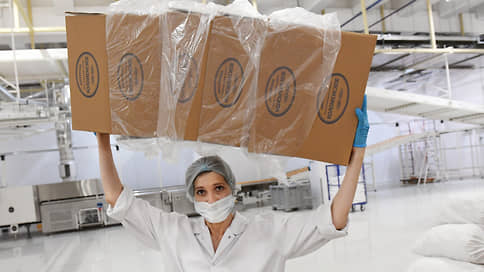« Kolomensky » will take up the production of finished food

The bakery and confectionery holding (BKH) « Kolomensky » Alexei Tulupov can launch a new direction of business, engaged in the production of finished dishes. This market is now actively growing, providing margin to manufacturers 17-30%. For fresh bread, this indicator remains minimal.
On March 26, BKH Kolomensky LLC registered a new design company – Prosinvest LLC, the main activity of which will be the production of finished dishes, follows from the Unified State Register of Legal Entities. The holding can independently engage in the distribution of these products: on March 17, Kolomensky also established the S sandbird LLC, specializing in the activities of restaurants and products for the delivery of products. The interlocutor “Kommersant” in the market notes that we are talking about a new project whose parameters have not yet been approved. In Kolomensky, they refused comments.
BKH « Kolomensky » is one of the largest manufacturers of bakery products in Russia. The holding was created on the basis of the plant of the same name, launched in the early 1990s after the privatization of the Moscow bakery No. 15. In December 2007, the company went under the control of Sminex, Alexei Tulupov. « Kolomensky » unites nine companies. Their total capacities suggest the production per day of 1.7 thousand tons of bakery, 250 tons of confectionery and 200 tons of rapidly frozen products. The revenue of the holding in 2024 amounted to 60 billion rubles, increasing by 35%per year.
The Executive Director of the Rusbrend Association Alexei Popovich explains that new players in the finished food market can bet on different audiences. Products are in demand both in young people, striving for a healthy lifestyle, and among the elderly people who live independently. Salads, ready -made dinners, breakfasts and so on are in demand, he lists. President of the Association of manufacturers and suppliers of finished food, Sergei Belyakov, says that new players are trying to enter the market with a wide line of products, which may include salads, soups, snacks, snacks, etc. The volume may depend on which region the company plans to develop, the expert said.
In Vastiville, it is noted that the most demand among customers of finished food is the second dishes, sandwiches and salads. Interest in the variations of classic dishes does not subside: Olivier and Caesar salads, pasta, mashed potatoes and cutlets, are listed on the network. The “scooter” is called the most growing positions following the results of January -Mar’s dishes with poultry meat (sales growth by 37%year for the year), Onigiri (34%), sandwiches (13%) and satisfying pancakes (12%).
The finished food market as a whole is growing rapidly.
Its turnover, according to Infoline, last year amounted to 4.43 trillion rubles, increasing by 24.1% year by the year. This year, analysts expect growth by 19.6%, up to 5.3 trillion rubles. In retail, sales of finished products increase faster. In 2025, their volume, according to Infoline, will reach 1.32 trillion rubles, adding 33%. The development of the market is facilitated by urbanization and an accelerating pace of life, says Dmitry Vostrikov, Executive Director of the Rusprodsoyuz Association (unites food manufacturers). The development of delivery services, according to him, makes ready -made dishes more accessible to a wide audience.
The finished food market is characterized by a limited supply. According to data that X5, 62% of manufacturers are currently working in Moscow and the Moscow Region in their presentation. In St. Petersburg and the Leningrad Region-only 6%. The shares of other regions are much lower. Acute deficiency, according to X5, is observed in the Urals, south and North Caucasus. NTECH research director Leonid Ardalionov believes that the finished food market is not yet sufficiently saturated with an offer, and its growth is largely provided by the release of new products.
A limited offer allows manufacturers to count on high margin of business. The indicator varies in the range of 17–25%, it is noted in Infoline. For confectionery, it can reach 30%. Retaillers, according to analysts, can count on margin at 50% due to one hundred percent margins for products. It is due to high demand and a significant amount of write -off, explain in Infoline. The profitability of the production of socially significant bread in this case, according to the head of the Institute for the Development of Entrepreneurship and Economics, Arthur Gafarov, remains minimal. This is due to disabilities for raising prices and constant growth in the cost of production.







